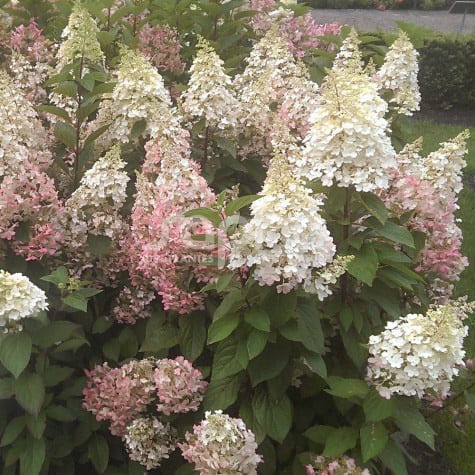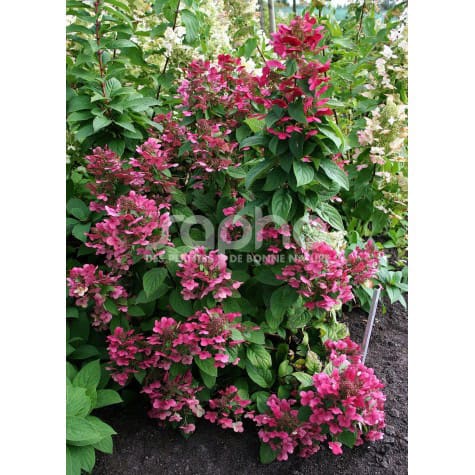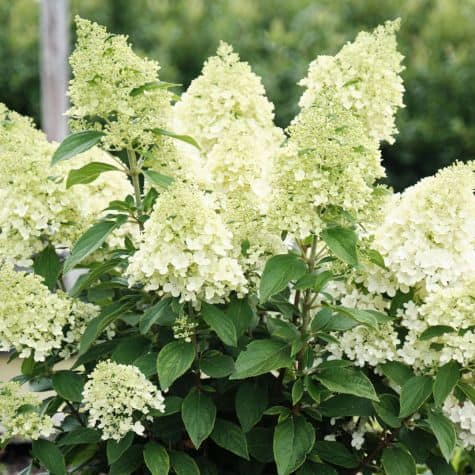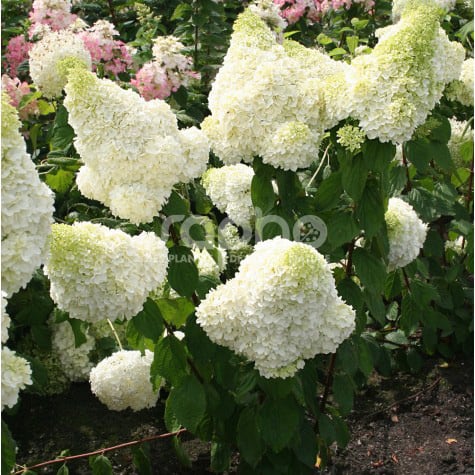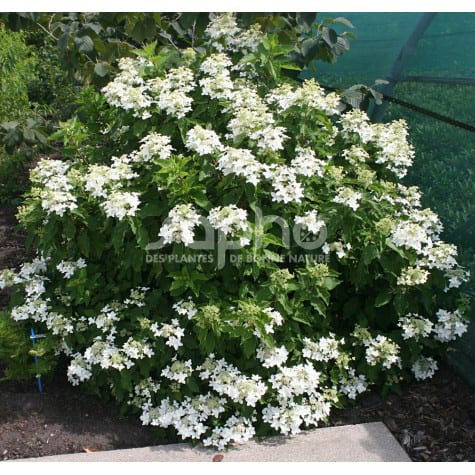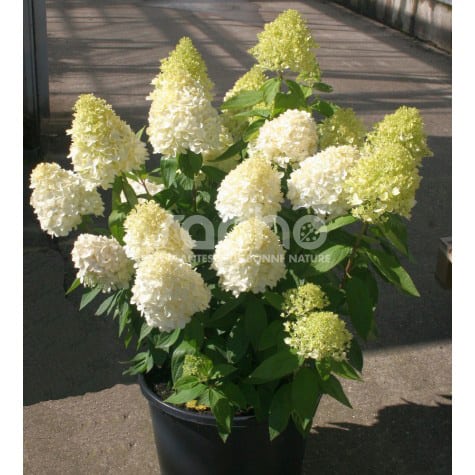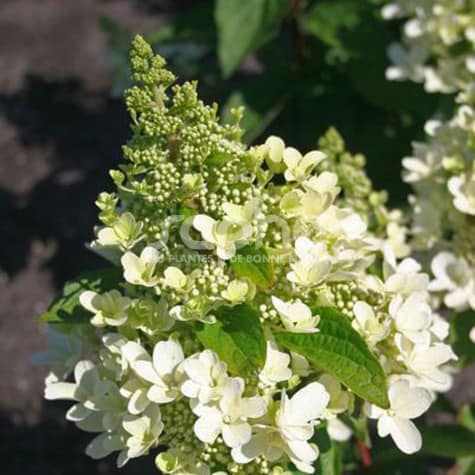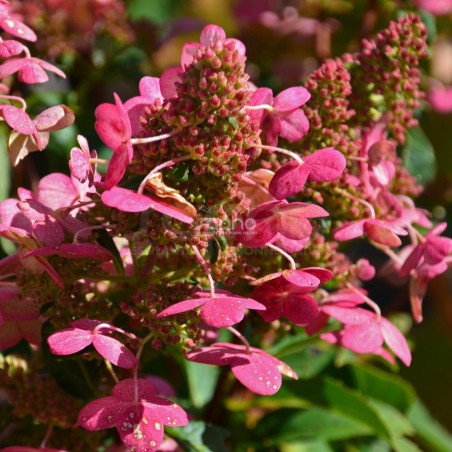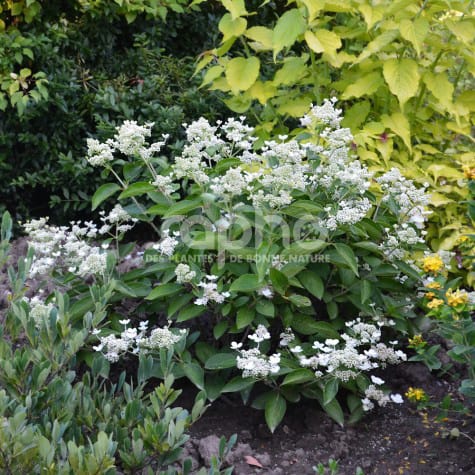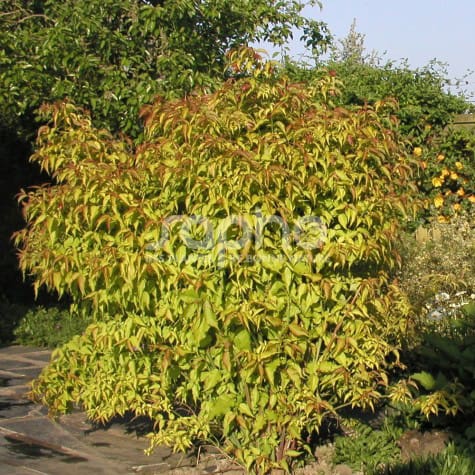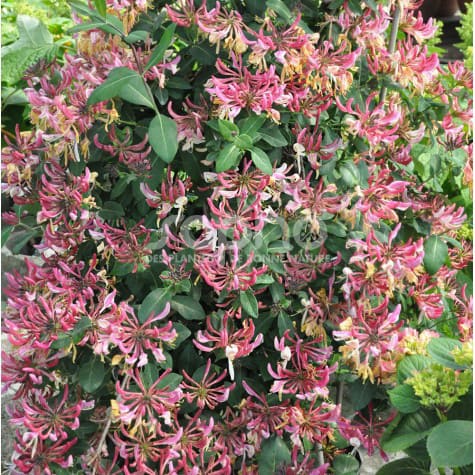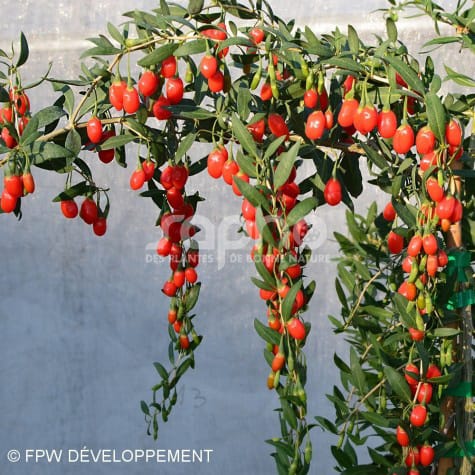Handsome creamy white panicles contrasting with upright dark red stems
Candlelight® has large creamy white cone-shaped panicles on upright dark red stems. The contrast between flower and stem is striking. The open panicles carry both sterile and fertile flowers. As summer advances, the flowers take on soft shades of gentle pink which become increasingly pronounced until the panicles are a strong dark pink. The Hydrangea paniculata CANDLELIGHT® is a particularly upright and branched shrub. Thanks to its vigorous and vertical growth, its flowers remain firm all summer. Growing no higher than 1.5 m, it can be planted either in boxes or in the ground, singly or in mixed beds.
Filter By
Foliage
Position
Where to find Sapho plants ?
For young plants
You will find the names of Sapho-licensed nurserymen at the bottom of each variety sheet.
For available plants
Please ask your nursery suppliers.
Each licensed propagator is free to market his young plants to all his customers.
Categories
Menu
All our varieties
Fire-red flower heads.
In July, quite straggly, white pyramid-shaped flowers which turn pink, then purple in September. Long lasting in a vase.
Upright growth, dense and even. Good growth.
A panicle hydrangea that blooms all over the plant
MAGICAL® Matterhorn is a panicle hydrangea that flowers all its branches, including the base.
It is highly floriferous from an early age, producing long, white-green panicle-shaped flowers in summer.
Use in the ground, as an isolated plant, in a bed or in a small hedge.
Spectacular panicles, first green, then white.
White-green to cream coloured flowers from July to September, according to planting position. Very big flower heads, 40 cm long, on a strong and rigid stem. Recommended as cut flowers.
Shrub shaped.
Star perfume.
White and fragrant flowers whose petals form a star. Numerous and elegant panicles from July to September.
Young red stems.
Strong-growing shrub, even and well-branched.
Abundant flower heads on strong stems
SWEET SUMMER is remarkable for its about 20 - 25 cm long, dense, cone shaped panicles. The sterile flowers are at first green, then white, and finally pink, and bloom progressively from the bottom to the top, the flowers thus offer a pretty layering. The very small fertile flowers are naturally hidden. The flowers renew themselves all summer long. the shrub simultaneously carries panicles of all three shades.The flower stems are strong and stay well upright, without dropping due to the weight of the panicles in full bloom.The heads can be used as cut or dried flowers. In autumn, the foliage turns from yellow to purple red.
Trophies:
Silver Medal at PLANTARIUM 2013 (Boskoop - Netherlands)
A compact novelty with evolving colours
Magical Vesuvio is a handsome novelty of Hydrangea paniculata with evolving colours. The panicles carry sterile and fertile flowers. Readily flowering, its strongly cone-shaped panicles change during the summer from white to dark red. Its compact shape will grow no higher and wider than 1.5 m and is thus ideal for boxes, small gardens or flowering hedges.
A very early white and a summery red!Prim'Red® has been selected for its remarkable precocity and its flower colours that evolve through the season. At the end of May or the beginning of June, according to the region, the flowers open to a creamy white which very rapidly, in two or three weeks, turns pink then red. This radiant colour remains for a long time, into July and August, sustaining the interest of the plant in comparison to typical paniculata like Dahrumas, which have a tendency to fade quickly.The large panicles are elegant, containing both sterile flowers that are pink to bright red, and fertile flowers, which are bright red (except for the stamens). Prim?Red® forms a small shrub up to 1.5 m with upright stems that branch freely and naturally. Given its precocity, pruning should be light, so as not to restrict its flowering. Better still would be a simple tidying-up.
The first hydrangea paniculata of the season.
PRIM'WHITE® has been selected from seedlings of Hydrangea paniculata 'Dharuma'. Flowering on the previous year's growth, the shrub is very early flowering from the end of May or June (depending on the region), this shrub produces elegant white, slightly flat flower panicles. The abundant sterile flowers have large sepals which start cream-coloured then turn white. In good conditions a second flowering prolongs its decorative interest in August - September..This small plant with fine grey-green wood, pale green foliage and very red stalks is of small growth. Well branched, it has a more regular shape and better growth characteristics than its parent plant.The different varieties of the Hydrangea paniculata range, supplied by SAPHO, go well in a shrub border together with perennials or in a pot.
Golden pheasant berryThis vigorous variety of lysteria is of dense and very ramified growth, with fine and graceful wood. Its foliage is semi-evergreen in regions with mild winters and is particularly remarkable throughout spring and summer: the young shoots have a red tint, the foliage stays golden for a long time, turning light green in summer.In July- August, GOLDEN LANTERNS are covered in abundant clusters of flowers with light pink petals turning white with very decorative dark red sepals. They make place for numerous, very ornamental dark red fruits, with purplish black berries. They last long into the autumn and are appreciated by birds.This bright selection should be planted individually, in groups or in a mixed hedge.
Imperial honeysuckle : an avalanche of beautiful red, fragrant flowers.
This selection of climbing honeysuckle of the CAPRILIA ® range derives from the Lonicera periclymenum 'Florida'. Its growth is medium.From mid June to July this flower bearing variety is particularly remarkable due to its big florets over the entire height of the plant. The fragrant flowers are carmine red in the bud stage, getting lighter on opening, turning cream, then yellow before wilting, producing a beautiful contrast.The dark green foliage shows off the flowers to their advantage. It is resistant to black spot, mildew and aphids.To be trained.
A real innovation from French genetics : An easy maintenance goji with sugary sweet berriesPRINCESS TAO® is an exclusively French genetic goji variety, the outcome of the breeding work by FPW DEVELOPPEMENT.The discrete light violet flowering starts at the end of May. It continues in successive waves right through into September, finally reaching the tips of its branches. The fruits form rapidly and simultaneously. When ripe, the berries are beautifully bright red and shiny. The picking from July onwards is easy as the berries are bigger than those of the currently available market varieties. The fruits are sweet, not astringent and can be eaten fresh or dried. Under good conditions the fruit production continues right into November.From the first year of planting, a small quantity of fruit can already be picked.The naturally layered growth makes staking necessary. Thanks to the sweet taste of its fresh berries and needing only little water, as well as being mildew resistant, PRINCESS TAO® links delicacy and easy maintenance.

